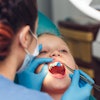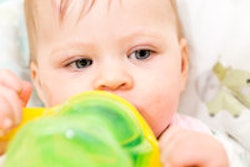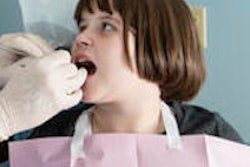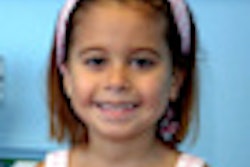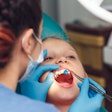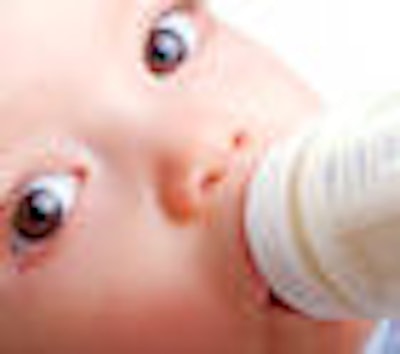
Children's oral health is an important component in many dental offices. The prevention of dental disease in our youngest patients needs to be a priority if we are to positively impact the rising decay rate in this segment of our population. While decay rates have been decreasing in school-age children and adolescents, it is on the rise in preschoolers.
We know that dental decay is a multifactorial disease with no one way to prevent it, but we can make great improvements in the decay rate by beginning the conversation about prevention with the parent/caregiver of an infant.
 Rhea Haugseth, DMD
Rhea Haugseth, DMD
The goal of this dialogue is to discuss ways that the parent/caregiver can directly influence the decay rate of their child by beginning preventive techniques. This conversation can be between a dental staff member and the parent/caregiver -- the main thing is to give the parent/caregiver important information so they can help their child attain and sustain optimum oral health throughout their lifetime.
Remaining cavity-free is a goal that can be achieved, and establishing a "dental home" is one of the best ways to do this. The American Academy of Pediatric Dentistry (AAPD) has defined the dental home as "the ongoing relationship between the dentist and the patient, inclusive of all aspects of oral health care delivered in a comprehensive, continuously accessible, coordinated, and family-centered way."
The AAPD, ADA, and the American Academy of Pediatrics all recommend the establishment of the dental home by a child's first birthday.
I have had many general dentists and family practice dentists tell me they don't know how to treat a very young child and are actually fearful of doing so. But by interacting with parents of infants and very young children, we can all help prevent dental disease and thereby reduce the need for treatment. This will greatly influence both the tooth-decay rate of these children, as well as their access to care.
Step-by-step approach
There are several ways to communicate this information to parents and caregivers. Infant and toddler preventive programs can be taught one-on-one or in large groups such as various mom groups, prenatal classes, parenting groups, twins or multiple births clubs, etc. You can even start a group for these parents in your own office.
Some key topics to discuss with these groups include:
- Diet. Stress that milk and juice should be given only at mealtimes and snack times. We recommend that the child have three meals a day and two snacks. The child's thirst should be quenched by drinking water before bedtime and throughout the day and night. Parents should try to serve nutritional snacks and not the salty or sweet kind that have little nutritional value. Fresh fruit, vegetables, cheese, and yogurt are all very healthy and nutritious options. Giving young children these foods will influence their choice of snacks for the rest of their lives.
- Vertical transmission of cavity-causing bacteria. Children are born without these bacteria. They appear to be transmitted to children by their parent/caregiver. Inform the parent/caregiver of these common ways to reduce the chance of this transmission:
- Do not eat from the same utensil you use to feed your child. Some parents sample the food first to show their child that it tastes good. Refrain from doing this as your saliva may contain these bacteria.
- Make sure your own mouth is in excellent oral health. Any untreated dental disease can increase the number of these bacteria in your mouth. Show your child the importance of good oral hygiene by taking good care of yourself.
- Do not place your child's pacifier in your mouth to clean it if it has been dropped. Rinse it off with water or wipe it off instead before giving it back to your child. Never dip the pacifier in any sugar-containing liquid or food.
- Try not to blow on your child's food to cool it -- your breath may contain small droplets of saliva, which may contain these bacteria.
- Sippy cups. The child can drink from a bottle or sippy cup throughout the day as long as it only contains water. The AAPD recommends that children be weaned off the bottle by age 1. Offer the child a cup instead. If the child uses the bottle as a pacifier to help them go to sleep, fill it only with water.
- Brushing and flossing. Before any teeth have erupted, the parent/caregiver should wipe out the child's mouth after every feeding. They can use a washcloth, gauze, or special wipes containing xylitol. Once a tooth has erupted, they should use a small, soft-bristled toothbrush to clean the tooth. If two teeth are touching, then flossing should begin. Parents can use fluoride-containing toothpaste when they brush. The AAPD recommends that a thin smear of fluoride-containing toothpaste be used on a child under the age of 2. After age 2, use a small, pea-sized amount of fluoridated toothpaste. Parents should keep the toothpaste out of their child's reach, and young children should not be allowed to place the toothpaste on their brush.
- Fluoride. Parents should be asked about the source of their water. If the community water or well water is non-fluoridated, then the child may need fluoride supplementation. A thorough evaluation of all possible sources of fluoride needs to be completed before fluoride supplements are prescribed.
- Medical history. If in a one-on-one situation, review the medical, social, and family histories:
- Discuss any perinatal issues, such as prematurity, which can cause enamel hypoplasia.
- Many medical diseases increase a child's susceptibility to decay and may increase their caries risk.
- Developmental delays/difficulties can also increase their caries risk.
- Special health-care needs can greatly increase the caries risk.
- Ask the parent/caregiver about their own oral health, history of decay, and dental treatment.
- Ask about siblings and their oral health status and history. Decay in siblings increases the child's caries risk.
- Ask about the issues listed in items 1-5 above and discuss.
- Examination. A staff member or dentist can perform a knee-to-knee exam anywhere in the office. Simply place your knees up against the parent/caregiver's knees, forming a table. Lay the child with their legs wrapped around the parent/caregiver's waist, with the parent/caregiver holding the child's hands. Then simply lift the upper lip and look for plaque, decay, demineralization, or any abnormalities in the mouth. Evaluate soft tissues as well as the teeth.
A tooth-brushing demonstration can be done at this time without toothpaste. Instructing a parent/caregiver to lay the child across their lap at home is a very efficient, effective way to brush.
We can reverse the increasing decay rates in this extremely vulnerable segment of our population by beginning this conversation with parents/caregivers of young children, especially infants. General and family practice dentists, along with their team members, can greatly assist in reducing the need for costly, complex treatment that is usually performed by the specialist, the pediatric dentist.
Together, the entire dental community can decrease the incidence of dental decay. If a parent with an infant or toddler is in your office receiving care, or waiting for another family member to complete their treatment, start this conversation and see the parent's appreciation. Parents and caregivers want to do what is best for their child. We all do.
Rhea Haugseth, DMD, is president of the American Academy of Pediatric Dentistry and has been a practicing pediatric dentist for more than 30 years.
